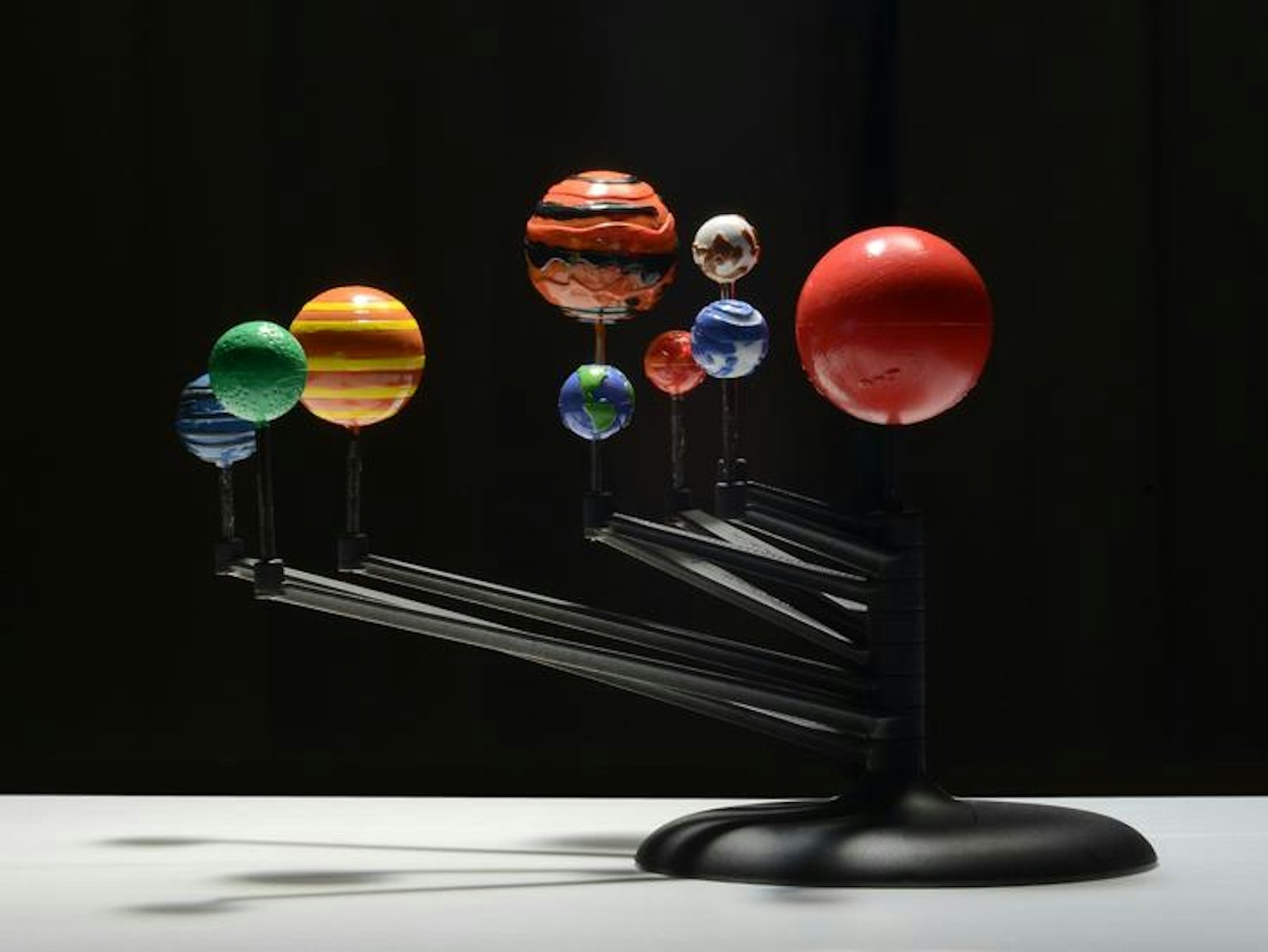The Sun is one busy celestial body. In addition to giving us light, holding the solar system together, and providing the energy for almost every living thing on Earth, it’s also a grapefruit in a grass field in Austin, Texas, and a 50-foot yellow archway in northern Maine.
Now, obviously this huge mass of incandescent gas is not literally making a tour of some of the geographical extremes of the contiguous U.S. states. These are just two places it’s made recent honorary appearances in the name of science.
The reason for these appearances is that it’s a lot harder to accurately depict the solar system than a lot of people realize. Not only are the Sun and planets enormously larger than anything we deal with on a daily basis, but the spaces between them are incredibly more vast than the bodies themselves, making even the Sun look tiny. But this isn’t the picture people often get. As science writer Lee Billings recently wrote in Aeon magazine, “A typical classroom poster depicts the planets extending out from the Sun in a close-packed sequence, like stepping stones an astronaut could skip across on a journey to the stars. In comparison with the Sun, each planet is usually shown scaled up tens, hundreds, even thousands of times its actual size.”
So to accurately depict the scale of the solar system, some educators and communicators build rather unconventional models on a scale that doesn’t fit on a poster, in a classroom, or even within a school. Science writer Joe Hanson recently made a video in which he placed a grapefruit on the ground in a park in Austin, next to a tall lighting tower, and asked viewers to imagine it as the Sun. He then walks away from the grapefruit-cum-star and places markers, at proportionally accurate distances, to represent each major body in the solar system; Mercury (proportionally the width of four human hairs) is 15 feet away from the grapefruit, and so on. As Hanson walks through the solar system placing planets, you really do get a better feel for the hugeness of space and the tinyness of even something so big as the Sun. In one particularly evocative bit, Hanson says that “movies get the asteroid belt all wrong. If you clumped it all together, it would only be about 4 percent the mass of our Moon. That means it’s the same as a grain of salt crushed up and distributed around this entire orbit,” 75–150 feet from the grapefruit. When he eventually marks the location of Neptune, 1,150 feet away from the center, the grapefruit is too far to be seen; only the tower marking its location is visible.
An even larger solar system is described in Billings’ piece: a 55-mile-long model in which the Sun is played by a yellow-painted archway in the Northern Maine Museum of Science. Billings (a Facts So Romantic contributor) tells a great story of how geology professor Kevin McCartney led a group of helpful community volunteers in building the model—from across the “geographic and socioeconomic width and breadth of northern Maine,” writes Billings—without any funding at all. This model also communicated the scale of the solar system better than the typical schoolroom poster, but with its size and permanence, it had a different effect for the people who drive by it routinely. “[The planets] serve as convenient landmarks—a house in downtown Presque Isle is said to be ‘two miles past Jupiter,’ and Saturn is a common rallying point for road-tripping caravans,” writes Billings.
While the two models are very different in materials and scale, one important thing they share is the element of movement. For a system that spans a range of sizes as wide as the solar system does, it’s not feasible to fit an accurate, to-scale map on something that’s the size of a poster; it has to be much bigger. Only by moving through one of these models, or at least envisioning that movement, can we get a good feel for the profoundly empty space that exists above the air over our heads.
Amos Zeeberg is the digital editor of Nautilus and oversees Facts So Romantic. Find him on Twitter @settostun.
























